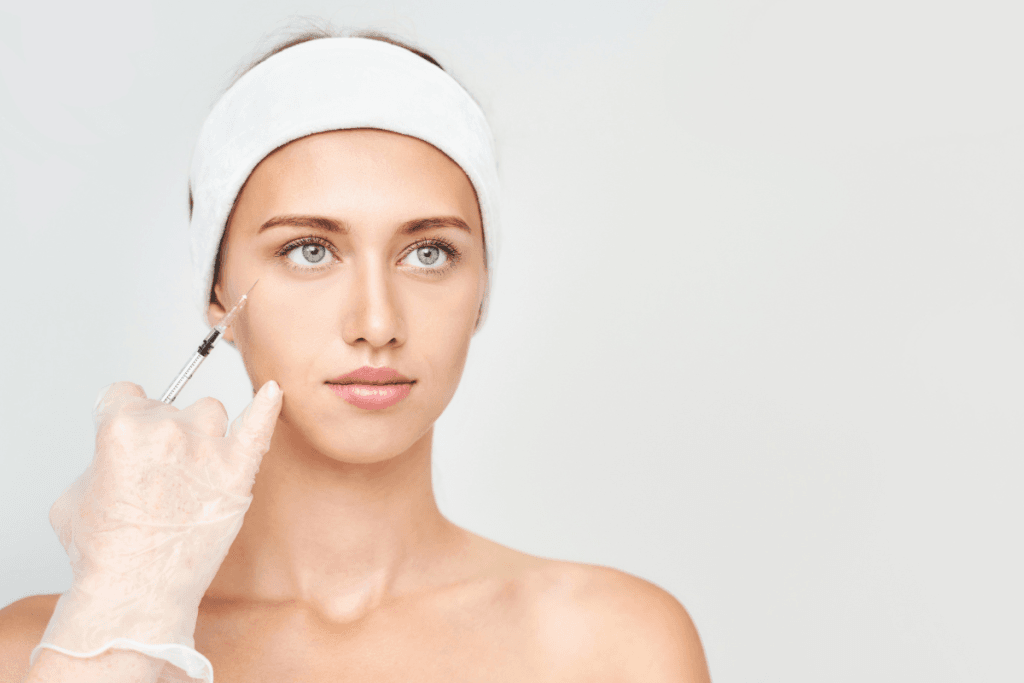The demand for non-surgical aesthetic treatments continues to rise as patients seek minimally invasive procedures that deliver natural and long-lasting results. Among the most advanced injectable treatments available today, Poly-L-Lactic acid is a revolutionary collagen stimulator designed to enhance volume restoration and facial rejuvenation. Unlike traditional dermal fillers that provide immediate volume, this biocompatible substance encourages the body’s natural collagen production, offering gradual but significant improvements in skin texture, elasticity, and structure.
For medical practitioners, understanding how this form of treatment works, its benefits, and the best practices for administration is essential in achieving optimal patient satisfaction. This article explores the science behind Poly-L-Lactic acid, its role in aesthetic medicine, and why it is a preferred choice for long-term facial rejuvenation.
What is Poly-L-Lactic Acid?
Poly-L-Lactic acid is a biodegradable and biocompatible synthetic polymer used in medical applications for decades. Initially developed for dissolvable sutures, its role in aesthetic medicine emerged due to its ability to stimulate collagen production. Unlike hyaluronic acid fillers, which provide immediate plumping effects, Poly-L-Lactic acid filler works gradually, encouraging the skin to restore lost volume over several months.
Once injected, the product disperses within the dermal layers and triggers fibroblast activity, increasing collagen synthesis. As the body metabolizes the injected material, new collagen forms in its place, creating a natural lift and improving skin firmness.
Benefits of Poly-L-Lactic Acid in Aesthetic Treatments
For medical practitioners offering non-surgical rejuvenation, this injection provides several advantages over traditional dermal fillers. These benefits include:
- Gradual and Natural-Looking Results – Unlike fillers that provide immediate volume, this treatment works progressively, creating a more natural enhancement that develops over time.
- Long-Lasting Effects – Results can last up to two years as the new collagen remains in place long after the injected substance has been absorbed.
- Stimulates Collagen Production – This treatment enhances the skin’s structural integrity by promoting natural collagen regeneration rather than simply filling wrinkles.
- Minimally Invasive with No Downtime – The procedure involves a simple injection process with minimal discomfort and recovery time, making it an attractive option for busy patients.
- Versatility in Treatment Areas – While commonly used for facial volumization, Poly-L-Lactic acid filler can also be used in areas such as the hands, décolletage, and even buttock augmentation.
How Poly-L-Lactic Acid Compares to Other Fillers
When advising patients, medical professionals must consider the differences between Poly-L-Lactic acid treatments and traditional dermal fillers, unlike hyaluronic acid-based fillers, which provide instant volume but require periodic touch-ups, Poly-L-Lactic acid injection treatments work by encouraging collagen production over time.
- Hyaluronic Acid Fillers: Best for immediate plumping and hydration with results lasting 6–18 months.
- Poly-L-Lactic Acid Fillers: Best for gradual volume restoration and collagen stimulation, with results lasting up to two years.
- Calcium Hydroxylapatite Fillers: Provide a mix of immediate volume and collagen stimulation, lasting around 12–18 months.
Practitioners should assess patient goals, skin type, and treatment expectations before recommending Poly-L-Lactic acid over other filler options.
Best Practices for Administering Poly-L-Lactic Acid
To achieve the best outcomes when using Poly-L-Lactic acid injection, medical practitioners must follow specific protocols:
- Dilution and Preparation – The product requires reconstitution with sterile water for injection several hours before administration to ensure proper consistency and dispersion.
- Injection Technique – Unlike traditional fillers, Poly-L-Lactic acid is injected into deeper dermal layers using a cross-hatching or fanning technique for even distribution.
- Massage After Injection – Patients should be advised to massage the treated areas for five minutes, five times a day, and five days post-treatment to promote even collagen formation.
- Gradual Treatment Approach – Results build over multiple sessions, typically spaced four to six weeks apart. Most patients require two to three sessions for optimal results.
Common Treatment Areas for Poly-L-Lactic Acid
While Poly-L-Lactic acid skin care treatments are widely used for facial rejuvenation, they can also be applied to other areas for collagen stimulation and volume enhancement.
- Midface and Cheeks – Restores youthful contours and treats volume loss caused by aging.
- Jawline and Chin – Improves definition and structure for a more sculpted appearance.
- Nasolabial Folds and Marionette Lines – Reduces deep-set wrinkles for a smoother complexion.
- Temple Hollows – Corrects volume depletion in the upper face for a balanced look.
- Hands and Décolletage – Enhances skin texture and reduces crepiness caused by aging.
Considerations for Medical Practitioners
While Poly-L-Lactic acid injection is highly effective, medical professionals should assess the following considerations before recommending treatment:
- Patient Suitability – Ideal for individuals with mild to moderate volume loss rather than those needing instant plumping.
- Contraindications – Should not be used in patients with autoimmune disorders, active skin infections, or a history of keloid scarring.
- Patient Education – Since results develop gradually, patients should have realistic expectations and commit to multiple treatment sessions.
- Combination Therapies – Can be paired with other injectables, such as hyaluronic acid fillers or neuromodulators, for comprehensive facial rejuvenation.
Medical practitioners can ensure optimal outcomes and high patient satisfaction by providing thorough patient consultations and treatment planning.
For clinics and aesthetic professionals looking to incorporate Poly-L-Lactic acid treatments into their practice, sourcing high-quality, authentic products is essential. One of the most trusted Poly-L-Lactic acid fillers available is Sculptra™, a clinically proven injectable designed to stimulate collagen production and restore volume gradually.
Order Sculptra™ today from MedWholesaleSupplies and provide your patients with cutting-edge collagen-stimulating treatments that enhance skin firmness and volume over time.
Conclusion
Poly-L-Lactic acid has become a preferred option for non-surgical facial rejuvenation, offering long-term benefits beyond traditional dermal fillers. Its ability to stimulate collagen production, restore lost volume, and provide natural-looking results makes it an essential tool for medical practitioners.
Understanding how to administer Poly-L-Lactic acid injection effectively, educate patients on treatment expectations, and integrate it into aesthetic protocols can help clinics enhance their service offerings. As demand for minimally invasive anti-aging solutions grows, Poly-L-Lactic acid remains a leading choice in advanced skin care treatments.
Frequently Asked Questions (FAQs)
How long do results from Poly-L-Lactic acid filler last?
Results typically last up to two years as newly produced collagen remains after metabolizing the product. Patients usually require two to three sessions for optimal volume restoration and maintenance.
What areas can be treated with this injection?
Common treatment areas include the cheeks, temples, jawline, nasolabial folds, and hands. It is also used in body treatments, such as non-surgical buttock augmentation and skin rejuvenation for the décolletage.
How soon will patients see results after acid injection?
Unlike hyaluronic acid fillers, which offer instant results, this treatment works gradually. Most patients notice visible improvements within six weeks, with continued enhancement over several months as collagen production increases.







